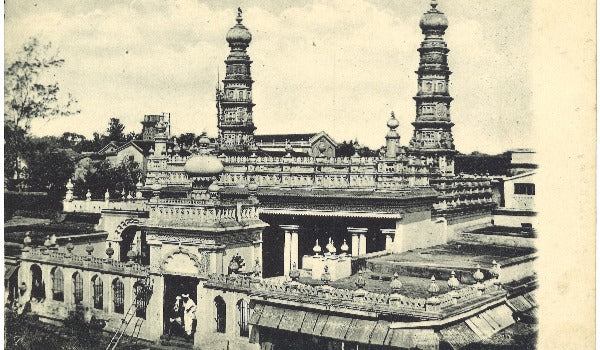
From Madras To Bangalore

There's nothing like receiving a postcard from a far-off beautiful location to inspire feelings of longing - and also envy. Despite the decline in letter-writing, thanks to the inventions of e-mail and social media, over 150 million postcards are sent by Britons each year, continuing a holidaymaker's tradition that stretches back to the Victorian era.
In the early decades of the 20th century, postcards were at the height of their popularity and were an innovative and affordable form of communicating. It has been estimated that in Britain alone approximately six billion postcards passed through the British postal system between 1902 and 1910. In those days, there were several postal deliveries per day, which meant that postcards weren't quite as slow a communication method as we might imagine. In fact, two people living in the same town could have had a whole conversation by postcard in one day.

This month, the School of Oriental and African Studies (SOAS) is holding an exhibition that explores how postcards linked two Indian cities, separated by 215 miles. From Madras to Bangalore will display a selection of picture postcards from the Indian cities of Madras and Bangalore (now Chennai and Bengaluru), sent between 1900 and 1930. They were the two most important colonial cities in South India, being central administrative centres for the British. The postcards on display form an important part of the material history of these two cities, providing a visual document of the colonial encounter. Yet, they are also highly personal artefacts. The majority of the postcards on display were written by European women in an informal style (contrasting with formal styles of letter-writing of the day). Messages were short but carried snippets of happenings with them from one city to the other, usually sent to friends and relatives.
The exhibition opens today and runs until 23 September 2018. To find out more, visit www.soas.ac.uk/gallery/from-madras-to-bangalore
Blog post by Jessica Edney
